NCERT Solutions for Class 8 History - The Making of the National Movement: 1870s-1947
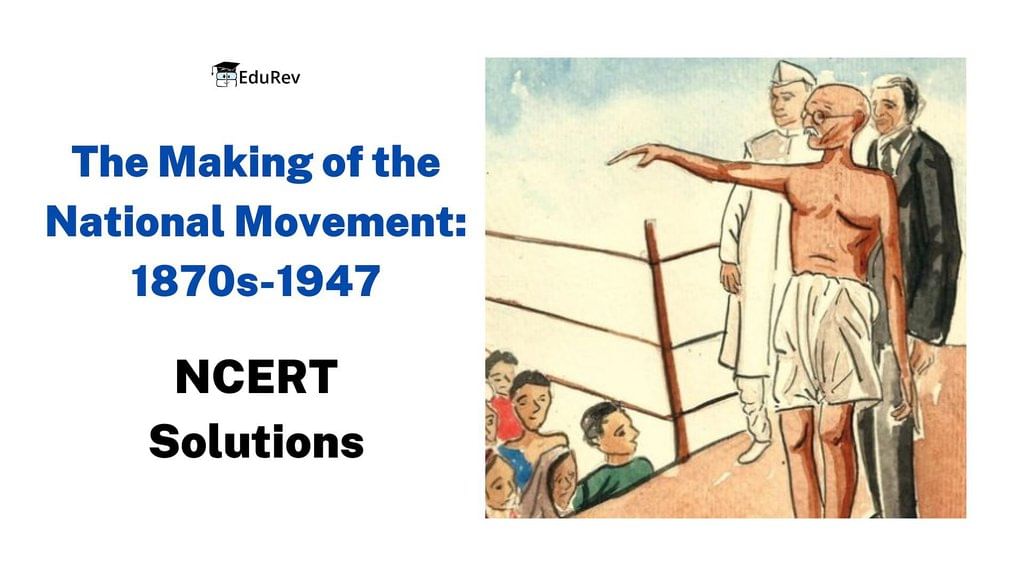
Let's Recall
Q1. Why were people dissatisfied with British rule in the 1870s and 1880s?
Ans: During the 1870s and 1880s, people in India were very unhappy with British rule. Here are some of the reasons why they felt this way: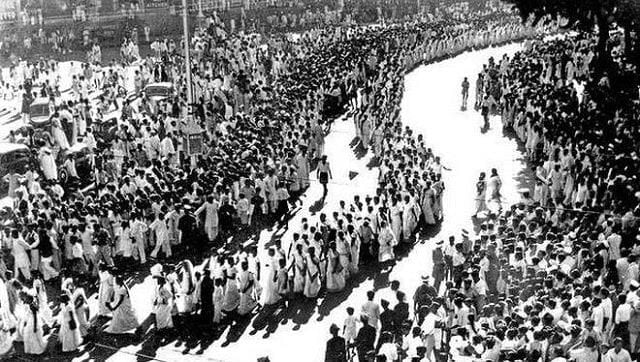 Quit India Movement
Quit India Movement
- British Control: The British had full control over India's resources, which meant that the wealth of the country was being taken away by the British. This made Indians feel like their own country was being exploited.
Restrictions on Indians: The British were trying to control every aspect of the lives of Indian people. This made it difficult for India to be a country that was truly for its own people.
Acts that Limited Freedom: The British government passed laws that restricted the freedom of Indians. For example, the Arms Act of 1878 made it illegal for Indians to possess weapons, and the Vernacular Press Act of 1878 allowed the government to take away the assets of newspapers that published anything the government considered "objectionable". These acts were seen as oppressive and unfair.
Ilbert Bill Controversy: In 1883, the British government tried to introduce a bill called the Ilbert Bill. This bill would have allowed Indians to judge British or European individuals, and it aimed to bring equality between Indian and British judges. However, white opposition forced the government to withdraw the bill, which made Indians very angry and frustrated.
These reasons contributed to the widespread dissatisfaction with British rule in the 1870s and 1880s. The actions of the British government made Indians feel like their rights were being violated and their voices were not being heard.
Q2. Who did the Indian National Congress wish to speak for?
Ans: Indian National Congress wished to speak for all the people of India, irrespective of class, colour caste, creed, language, or gender. It stated that India, its resources, and its systems were not of any one class or community of India, but of all the different communities of India.
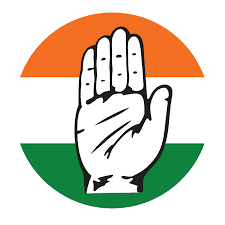 Symbol of Indian National Congress
Symbol of Indian National Congress
Q3. What economic impact did the First World War have on India?
Ans: The First World War altered the economic and political situation in India.
(ii) The First World War led to a huge rise in the defense expenditure of the Government of India. The government in turn increased taxes on individual incomes and business profits.
(iii) Increased military expenditure and the demands for war supplies led to a sharp rise in prices which created great difficulties for the common people. They found it difficult to fulfill even their essential needs.
(iv) On the other hand, business groups reaped fabulous profits from the war. The war created a demand for industrial goods such as jute bags, cloth, and rails, and caused a decline in the imports from other countries into India. As a result, Indian industries expanded during the war.
Q4. What did the Muslim League resolution of 1940 ask for?
Ans: The Muslim League resolution of 1940 asked for "Independent States" for Muslims in the North-Western and Eastern areas of the country. The resolution did not mention partition or Pakistan.
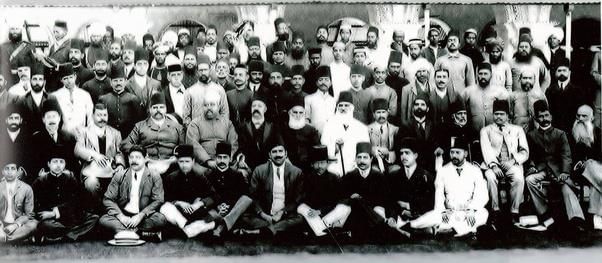 Muslim League
Muslim League
Let's Discuss
Q5. Who were the Moderates? How did they propose to struggle against British rule?
Ans:
- In the first twenty years of its existence, the Congress was “moderate” in its objectives and methods.
- We can say that “Moderates” were the leaders of Congress who presented their demands to the
- British in a moderate way and they wanted gradual reforms. They aimed at better and more friendly association with the British.
- They proposed to struggle against British rule in a non-violent manner which the radicals called “politics of petitions”.
- The moderates included leaders like Surendranath Banerjee, G Subramanya Aiyar, Dadabhai Naoroji and Gopal Krishna Gokhale.
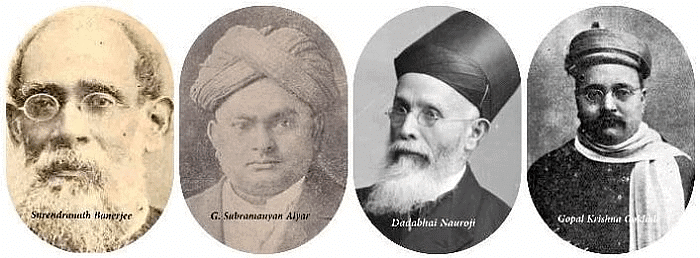 Moderates in INCProposed methods to struggle against the British government
Moderates in INCProposed methods to struggle against the British government
- The demands were presented to the British through petitions, meetings, speeches, and resolutions.
- They published newspapers, wrote articles, and showed how British rule was leading to the economic ruin of the country.
- Their whole attitude was of reconciliation and not confrontation.
- They would do nothing which would offend the British rulers.
Q6: How was the politics of the Radicals within the Congress different from that of the Moderates
Ans:
- To fight for swaraj, the radicals advocated mass mobilization and boycott of British institutions and goods. Some individuals also began to suggest that “revolutionary violence” would be necessary to overthrow British rule.
- Moderates, on the other hand, wanted to follow the rules and law and order posed by the British. They followed the "practice of prayers" which radicals totally opposed.
Q7. Discuss the various forms that the Non-Cooperation Movement took in different parts of India. How did the people understand Gandhiji?
Ans: During 1921 and 1922 the Non-Cooperation Movement gained momentum. Students left their schools. Lawyers gave up their practices, British titles were surrendered and people lit public bonfires of foreign clothes.
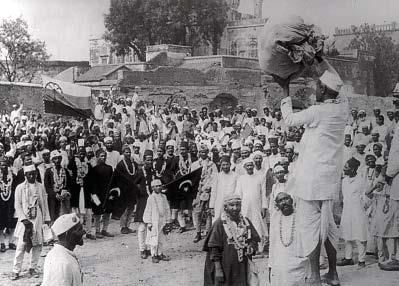 Non-Cooperation Movement(i) The Non-Cooperation movement gained momentum differently in different parts of India:
Non-Cooperation Movement(i) The Non-Cooperation movement gained momentum differently in different parts of India:
- In Kheda, Gujarat, Patidar peasants organized non-violent campaigns against the high land revenue demand of the British.
- In coastal Andhra and interior Tamil Nadu, liquor shops were picketed.
- In the Guntur district of Andhra Pradesh, tribals and poor peasants staged a number of “Forest Satyagrahas”, sometimes sending their cattle into the forest without paying grazing fees.
- In Bengal, the Khilafat-Non-Cooperation movement alliance gave enormous communal unity and strength to the national movement.
- In Punjab, the Akali agitation of the Sikhs sought to remove corrupt mahants supported by the British from their gurudwaras.
- In Assam, tea gardens labourers demanded in a big increase in their wages.
(ii) The way in which the people understood Mahatma Gandhi:
Gandhi Ji was thought of by people as a messiah, someone who could help them overcome their misery and poverty. Peasants were hopeful that Gandhiji wished to build their fight against Zamindars.
For instance, at the end of a powerful movement, peasants of Pratapgarh in the United Provinces managed to stop the illegal eviction of tenants but they felt it was Gandhiji who had won this demand for them. Agricultural labour felt that he would provide them with the land.
Q8. Why did Gandhiji choose to break the salt law?
Ans:
- Gandhiji chose to break the salt law as the British government had a monopoly on the manufacture and sale of salt.
- It also imposed a tax on the sale of salt. Gandhiji believed that it was sinful to tax salt as it was an essential part of food.
- He led a march to the coastal town of Dandi, where he broke the salt law by gathering natural salt found on the seashore, and boiling seawater to produce salt.
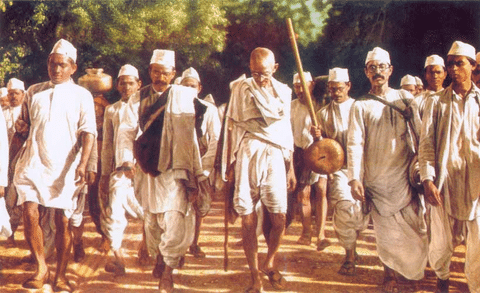 Dandi March
Dandi March
This march related the general desire for freedom to a specific grievance shared by everybody, and thus, did not divide the rich and the poor.
Q9. Discuss those developments of the 1937-47 period that led to the creation of Pakistan.
Ans: The developments leading to the creation of Pakistan are given below
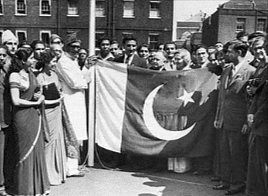 Creation of Pakistan
Creation of Pakistan
- A two-nation theory: Initially the Muslim League never mentioned Pakistan to be a nation of Muslims. However, since the 1930s, it started demanding a separate country for Muslims.
- Provincial elections of 1937: The elections were a decisive factor for the Muslim League to decide that Muslims are a minority in India and they have to have a separate nation for them for their just representation in politics.
- Tiff between Congress and Muslim League: When Congress rejected the Muslim League’s offer for a joint congress-league government in united provinces, the league decided to part ways forever.
- Failed talks: No discussion could turn out to be successful where both Congress and the Muslim league come to a conclusion of only one nation. British too at the end of the 2nd world war opened negotiation talks with both Congress and League however it turned futile.
- Provincial elections of 1946: Muslim league’s spectacular victory on the seats reserved for Muslims gave the confidence to create a separate nation.
- Mass agitation: The failure of the cabinet mission in 1946 led to the mass agitation led by the Muslim League.
Partition was finalized and Pakistan was born.
Let's Do
Q10. Find out how the national movement was organised in your city, district, area or state. Who participated in it and who led it? What did the movement in your area achieve?
Ans:
This is to be self attempted. The answer would vary from student to student. But here is one example answer:
In our state, Bihar, the national movement for independence was organized by individuals who were wealthy and educated. The participation in the movement was widespread, encompassing various sections of society. At the onset of the movement, notable figures such as Babu Kunwar Singh, a member of the Rajput Royal house of Jagdishpur, and his army played significant roles in India's first war of Independence. The movement was led by several prominent leaders including Babu Kunwar Singh, Swami Shajanand Saraswati, Dr. Rajendra Prasad, Sri Krishna Sinha, Anugrah Narayan Sinha, Mulana Mazharul Haque, Jayprakash Narayan, Satyendra Narayan Sinha, Yogendra Shukia, and many others. Revolutionary figures like Khudiram Bose, Upendra Narayan Jha "Azad," and Prafulla Chaki were also active in Bihar. A crucial milestone in India's struggle for independence was the "Champaran Satyagraha," which marked Mahatma Gandhi's entry into the movement. Raj Kumar Shulkia, a local leader, drew Gandhi's attention to the plight of peasants suffering under an oppressive system established by European indigo planters. Ultimately, this system was abolished, and the Champaran Satyagraha propelled Gandhi into becoming a mass leader.
Q.11: Find out more about the life and work of any two participants or leaders of the national movement and write a short essay about them. You may choose a person not mentioned in this chapter.
Ans: Kunwar Singh: Babu Veer Kunwar Singh (1777-1858) was a zamindar of Jagdishpur near Arrah in the state of Bihar. At the age of 80 years, during India's First War of Independence (1857-58), he assumed command of the soldiers who had revolted at Danapur on 5 July 1857. Two days later, he occupied Arrah which was relieved by Major Eyre on 3rd August. He recorded victories in many battles. In his last battle which was fought on 23 April 1858 near Jagdishpur, Kunwar Singh had a victory over the force led by Captain Le Grand. On 26 April 1858, he died in his village.
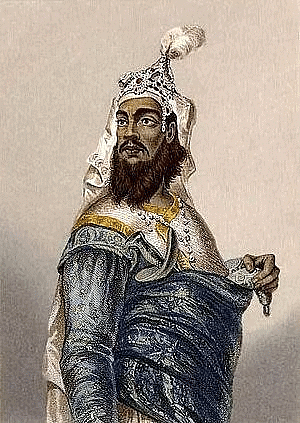 Kunwar Singh
Kunwar Singh
Sarojini Naidu: Sarojini Naidu (February 13, 1879—March 2, 1949), "the Nightingale of India was a distinguished poet, renowned freedom fighter and one of the great orators of her time.
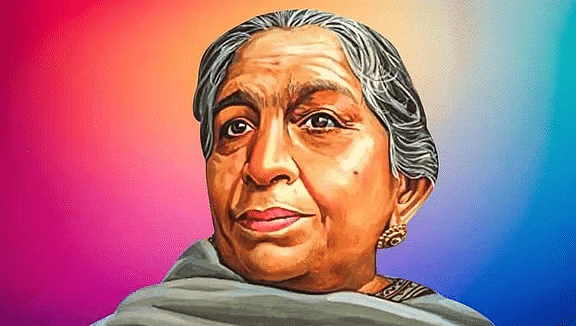 Sarojini Naidu
Sarojini Naidu
In 1898, she got married to Govindarajulu Naidu, a doctor by profession. She presided over the annual session of the Indian National Congress at Kanpur (1925). She had a leading role in Salt Satyagraha and consecutive struggles. She was President of the National Women's Conference for many years and trained many volunteers who took up women’s cause. She was the first woman to be appointed in 1947 as the Governor of the United Province (Presently—Uttar Pradesh).
|
87 videos|558 docs|53 tests
|
FAQs on NCERT Solutions for Class 8 History - The Making of the National Movement: 1870s-1947
| 1. What were the main factors that contributed to the rise of the National Movement in India during the period of 1870s-1947? |  |
| 2. How did the formation of organizations like the Indian National Congress play a role in the National Movement? |  |
| 3. What were some of the key events and movements that shaped the National Movement during the given period? |  |
| 4. How did the national leaders and freedom fighters contribute to the success of the National Movement in India? |  |
| 5. What were some of the challenges faced by the National Movement in India during the given period, and how were they overcome? |  |

















